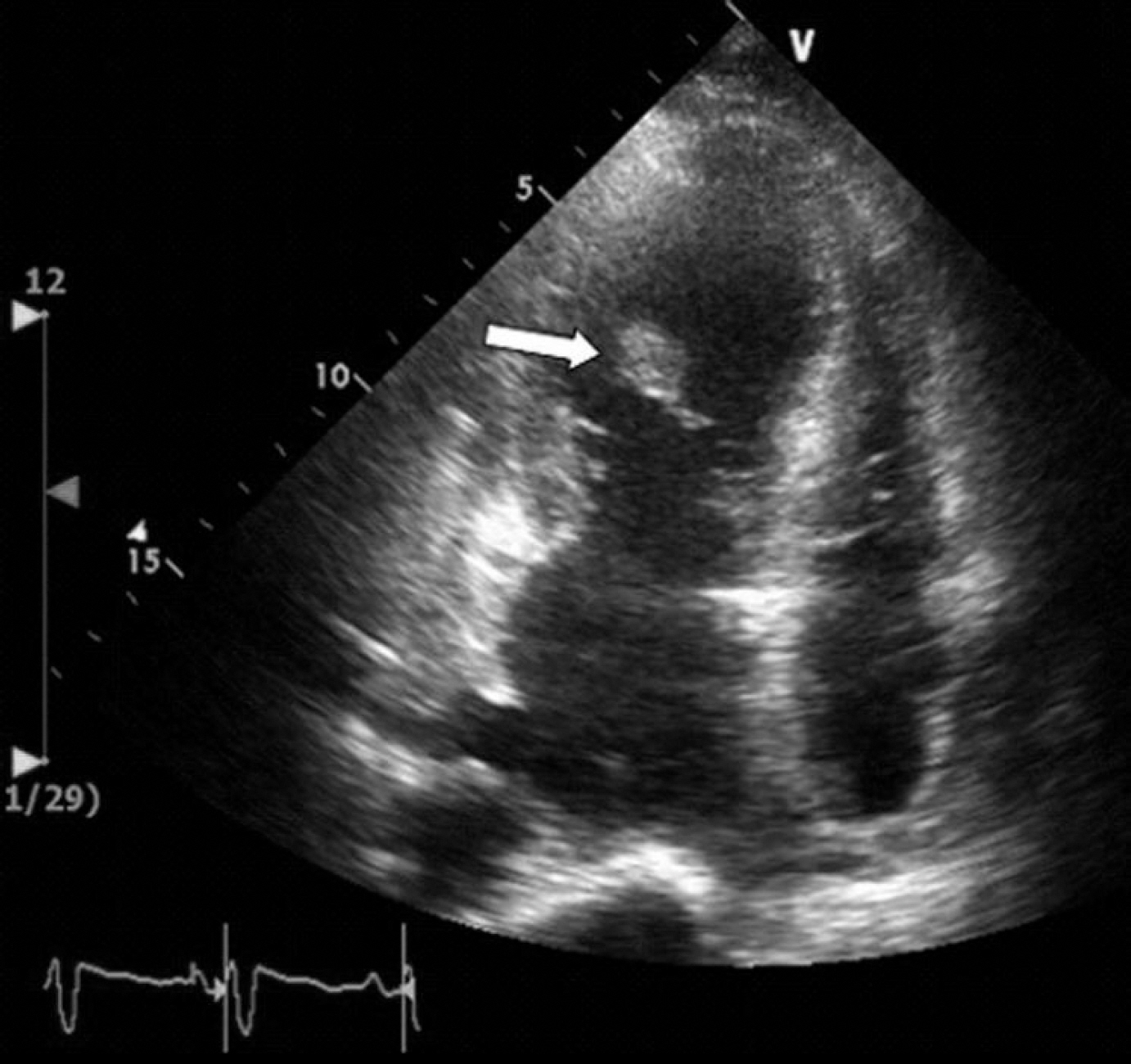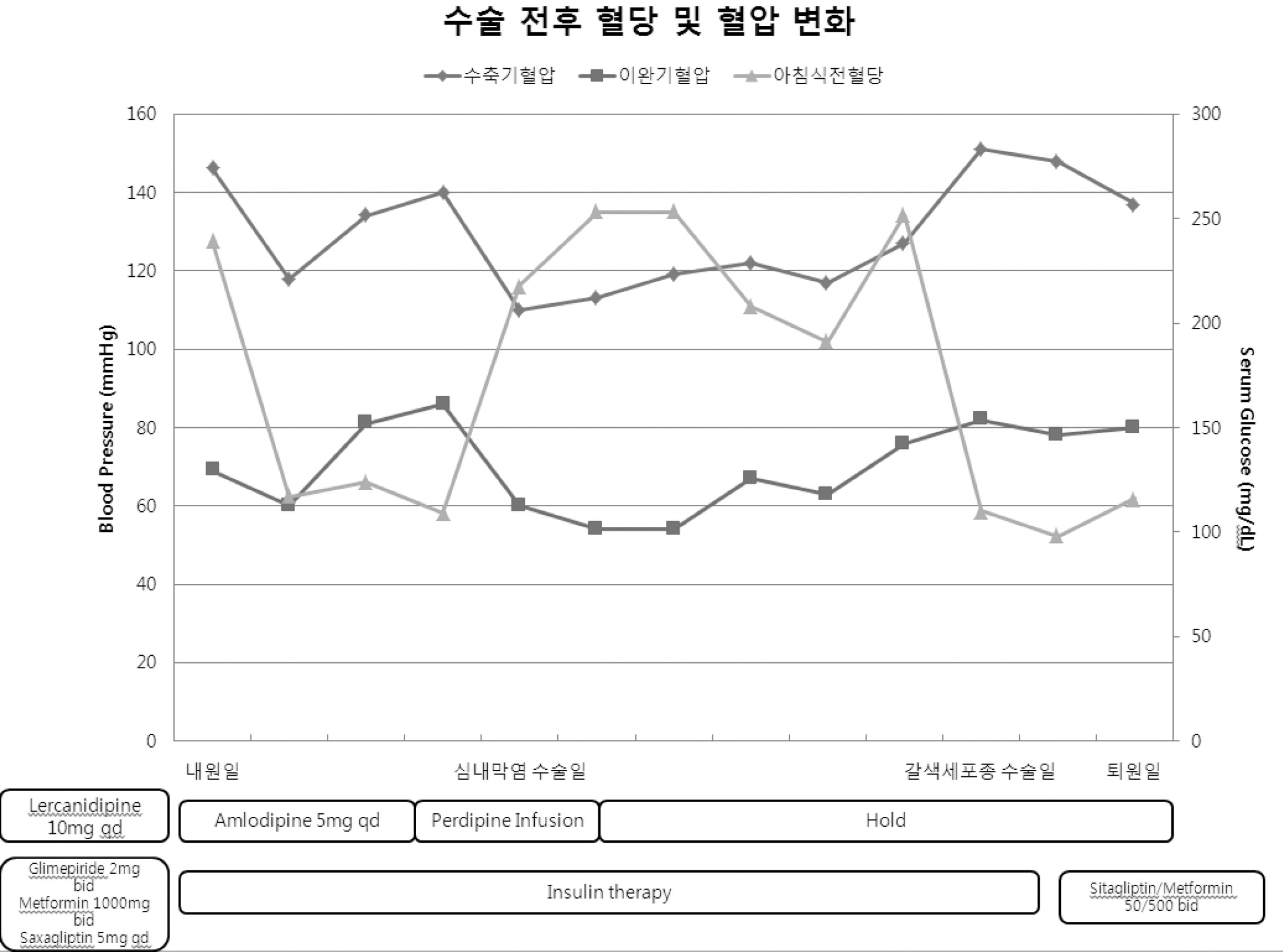J Korean Diabetes.
2013 Sep;14(3):156-161. 10.4093/jkd.2013.14.3.156.
A Case of Pheochromocytoma Associated with Diabetic Ketoacidosis and Infective Endocarditis
- Affiliations
-
- 1Department of Internal Medicine, Yonsei University College of Medicine, Seoul, Korea. edgo@yuhs.ac
- 2Severance Hospital Diabetes Center, Seoul, Korea.
- 3Institute of Endocrine Research, Yonsei University College of Medicine, Seoul, Korea.
- KMID: 2173927
- DOI: http://doi.org/10.4093/jkd.2013.14.3.156
Abstract
- Pheochromocytoma is a rare neuroendocrine tumor that is usually derived from adrenal medulla or chromaffin cells along with sympathetic ganglia. In Western countries, the prevalence of pheochromocytoma is estimated to be between 1:6,500 and 1:2,500, compared with an incidence in the United States of 500 to 1,100 cases per year. Despite this low incidence, pheochromocytoma should always be considered for differential diagnoses because previous studies have shown that this condition can be cured in approximately 90% of cases. However, an untreated tumor is likely to be fatal due to catecholamine-induced malignant hypertension, heart failure, myocardial infarction, stroke, ventricular arrhythmias or metastatic disease. Symptoms that result primarily from excess circulating catecholamines and hypertension include severe headaches, generalized inappropriate sweating and palpitations (with tachycardia or occasionally bradycardia). Pheochromocytoma, however, has highly variable and heterogeneous clinical manifestations, including fever, general weakness and dyspepsia, and can be observed in patients who are suffering from infectious diseases. Several of such case reports have been presented, but most of these included infectious patients with high blood pressure and severe fluctuations. In this study, we presented the case of a 53-year-old male who showed normal blood pressure, but had a sustained fever. He was diagnosed with diabetic ketoacidosis, infective endocarditis and asymptomatic adrenal incidentaloma. Despite treatment with antibiotics and valve replacement, the fever persisted. After the patient underwent evaluation for the fever, adrenal incidentaloma was identified as pheochromocytoma. After removal of the abdominal mass, his fever improved.
MeSH Terms
-
Adrenal Gland Neoplasms
Adrenal Medulla
Anti-Bacterial Agents
Arrhythmias, Cardiac
Blood Pressure
Catecholamines
Chromaffin Cells
Communicable Diseases
Diabetic Ketoacidosis
Diagnosis, Differential
Dyspepsia
Endocarditis
Fever
Ganglia, Sympathetic
Headache
Heart Failure
Humans
Hypertension
Hypertension, Malignant
Incidence
Male
Middle Aged
Myocardial Infarction
Neuroendocrine Tumors
Pheochromocytoma
Prevalence
Stress, Psychological
Stroke
Sweat
Sweating
Tachycardia
United States
Anti-Bacterial Agents
Catecholamines
Figure
Reference
-
References
1. Longo DL, Fauci AS, Kasper DL, Hauser SL, Jameson JL, Loscalzo J. Harrison's principles of internal medicine. 18th ed.New York: McGraw-Hill;2012.2. Yoo SJ. Diagnosis and treatment of pheochromocytoma. Korean J Med. 2012; 82:403–10.
Article3. Ryu JH, Ha CY, Oh JY, Hong YS, Sung Y-A. A case of pheochromocytoma manifested diabetic ketoacidosis. Korean J Med. 2003; 65:S844–8.4. Myers MG, Arshinoff SA. Infection and pheochromocytoma. JAMA. 1977; 237:2095–6.
Article5. Fränkel F. Ein fall von doppelseitigem, völlig latent verlaufenen nebennierentumor und gleichzeitiger nephritis mit veränderungen am circulationsapparat und retinitis Virchows Archiv. 1886; 103:244–63.6. Son HY, Chun JY, Kim GS, Huh KB, Lee SY. A clinical study on the phenochromocytoma. Korean J Med. 1979; 22:768–74.7. Bravo EL, Gifford RW Jr. Pheochromocytoma: diagnosis, localization and management. N Engl J Med. 1984; 311:1298–303.
Article8. Lo CY, Lam KY, Wat MS, Lam KS. Adrenal pheochromocytoma remains a frequently overlooked diagnosis. Am J Surg. 2000; 179:212–5.
Article9. William FYJ. Endocrine hypertension. Melmed S, Williams RH, S PK, R LP, M KH, editors. Williams textbook of endocrinology. 12nd ed.Philadelphia: Elsevier & Saunders;2011. p. 545–77.10. Neumann HPH. Pheochromocytoma. Longo DL, Fauci A, Kasper DL, Hauser SL, Jameson JL, Loscalzo J, editors. Harrison's principles of internal medicine. 18th ed.New York: McGraw-Hill;2012. p. 2962–7.11. Emmer M, Gorden P, Roth J. Diabetes in association with other endocrine disorders. Med Clin North Am. 1971; 55:1057–64.
Article12. Spergel G, Bleicher SJ, Ertel NH. Carbohydrate and fat metabolism in patients with pheochromocytoma. N Engl J Med. 1968; 278:803–9.
Article13. Manger WM. An overview of pheochromocytoma: history, current concepts, vagaries, and diagnostic challenges. Ann N Y Acad Sci. 2006; 1073:1–20.
Article
- Full Text Links
- Actions
-
Cited
- CITED
-
- Close
- Share
- Similar articles
-
- A case of pheochromocytoma manifested diabetic ketoacidosis
- Insulin Autoimmune Syndrome with Diabetic Ketoacidosis
- A case of Libman-Sacks endocarditis confused with infective endocarditis
- Pyogenic Arthritis of the Shoulder in Patient with Infective Endocarditis: A Case Report
- Delayed Rupture of Sinus of Valsalva after Infective Endocarditis: A Case Report





